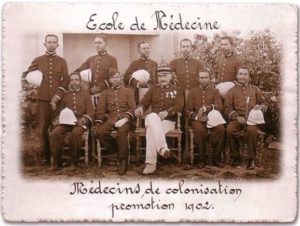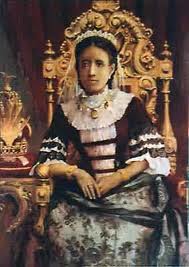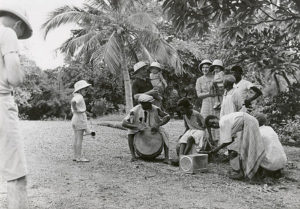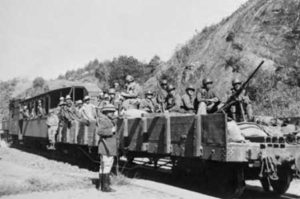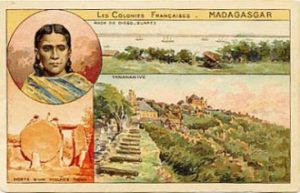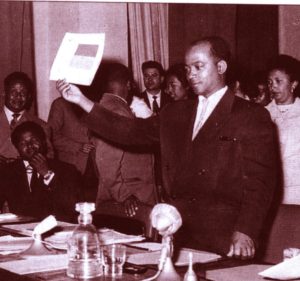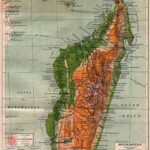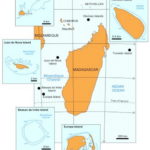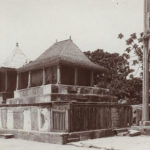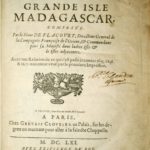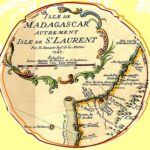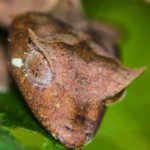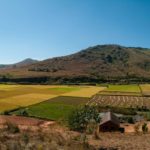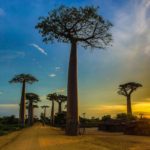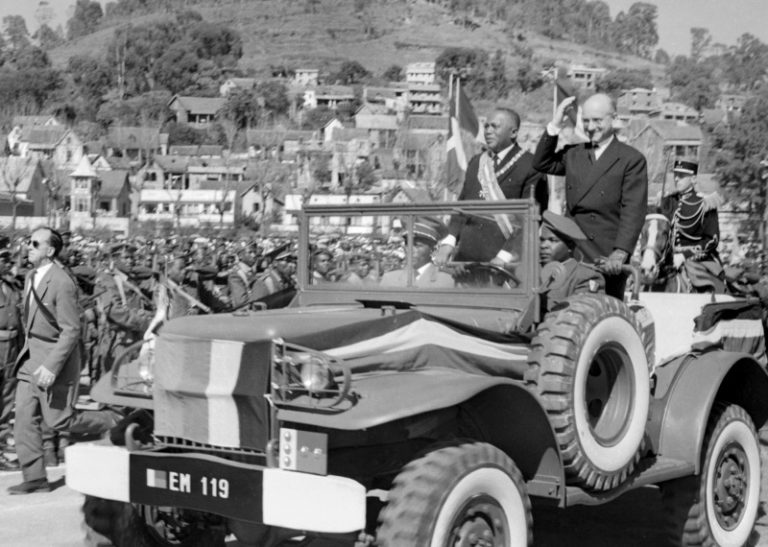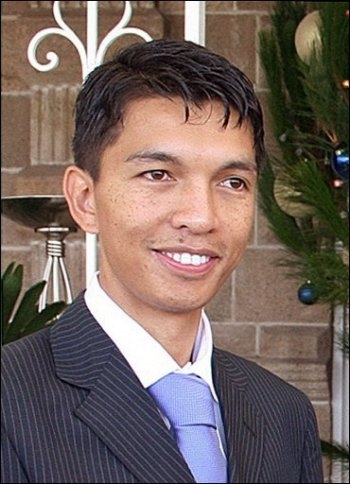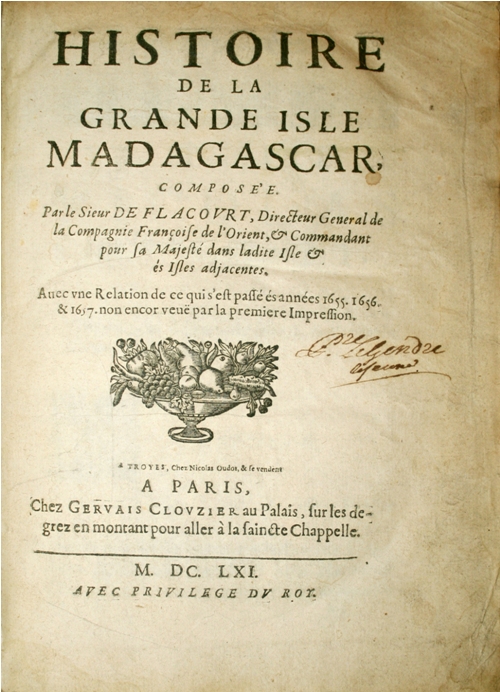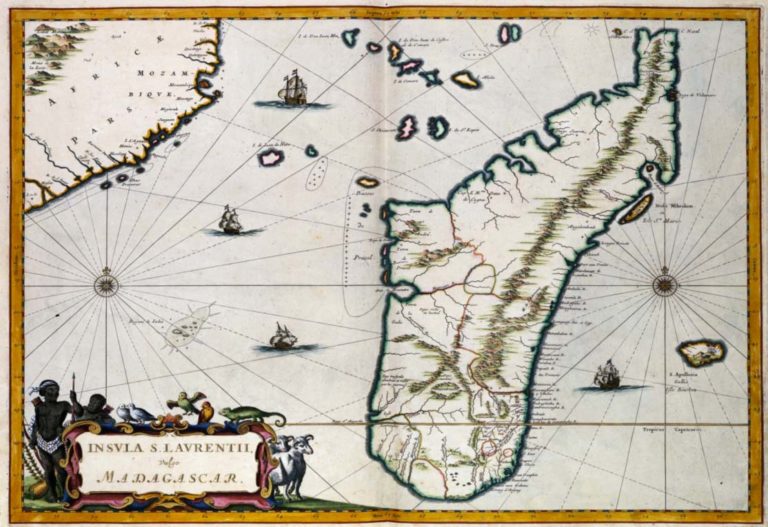The colonial period in Madagascar
For many years was Madagascar a French colonyIn this case, the colonial power was extremely brutal and disrespectful to the natives. For many years, Europeans had not succeeded in gaining a permanent foothold on the island of Madagascar. With modern weapons, a numerical superiority as well as an above-average brutal approach, the French finally succeeded in subjugating Madagascar as an island. The most important stations of this colonial period will be listed below. From them can be seen how great and sustainable the Influence of the French on Madagascar has been. Today, many Malagasy still try to shake off these French influences and banish them from their lives, but not always succeed the cultural fusions to break open again. If you have a Trip to Madagascar you will also encounter numerous testimonies of the French colonial rule on the island. If you are interested in this historical period, you can request from us a Tour for your vacation in Madagascar book thematically oriented to this historical area.
The French take over Madagascar
It began towards the end of the 19th century, when the French declared Madagascar a French protectorate. In doing so, the colonialists went exceedingly harsh and merciless against the population of the island and thereby evoked a Guerrilla war between the Malagasy and the French. This war lasted for a full ten years, during which the French prevailed over the less battle-hardened Malagasy in the long run. As a result, in 1896 Madagascar was declared a French colony.. This was equally the starting signal for the exploitation of the land and the population living there. The first act of the French occupiers initially took care of a political reorganization on the island. The previous queen Ranavalona III, now known as the last Merina queen of the island, was forced into exile by the French military and died in Algeria in 1917. Afterwards, the Malagasy tried to resist and fight against the occupiers for a while, but all uprisings were put down with the greatest brutality and violence. Thus, the crown prince as well as the acting minister of the interior of Madagascar were executed, entire villages were deliberately burned, and the inhabitants living there were often executed in the most brutal way. Described by the French as a so-called pacification phase, this name was considered more of a farce. Such a bloody era Even the cruel rule of Queen Ranavalona I, which had already cost the lives of many natives, seemed insignificant in comparison to this bloody and brutal spectacle. Nevertheless, the French did not succeed in breaking the will and the fighting spirit of the Malagasy, because again and again there were fierce uprisings.
The uprisings come to nothing
Faced with the fact that the Malagasy still refused to simply surrender to their fate and unconditionally accept French rule, the occupiers resorted to even harsher and more drastic measures. Typical Malagasy customs and cultural values were banished. French was considered the new official language and even the history was changed in the textbooks of the time. The Gauls now seemed to be the ancestors of the Malagasy, but the important French values such as liberty, equality and fraternity were deliberately not taught, but remained foreign words for the natives. Within a very short time, the Malagasy degraded to second class human beingsThey were denied access to better education, better jobs and administrative positions. The only advantage in this phase of the colonization of Madagascar was probably the Liberation of the slaves - around 70 percent of the people who had been classified as slaves up to that point were suddenly able to enjoy their return to freedom. Nevertheless, the Malagasy were gladly used as cannon fodder in the French wars. Nearly 45,000 Malagasy were forced to fight under the French flag in World War I, and about 2,000 of them lost their lives in the process.
Changes for the entire country
But it was not only the people who suffered under the rule of the French occupation - nature also had to give way slowly but surely. In fact, the colonialists made it their mission to more or less transforming entire areas of land. In the process, the native and original vegetation had to give way in many places to more acreage for vine, tobacco, coconut or sisal to preserve. Furthermore, the image of the cities and towns on Madagascar also changed: once small towns grew into large cities, while other cities known today were founded completely new and tumbled out of the ground. In many cities such as Fort Dauphin, Joffreville or Hell-Ville, the colonial flair is still the center of attention and can be seen, for example, in the various architectural features.
There were other important changes with regard to the country's infrastructure. Important road links such as the so-called National roads were created. A fact from which the people of Madagascar still benefit today. Besides this, additionally also Railroad lines built. Due to the sometimes extremely rough terrain, this was done only with great effort. Lines between Antananrivo and Tamatave or Antsirabe as well as Lac Alaotra were built, but are only partially used today. In the course of railroad construction on Madagascar, numerous Chinese also came to the island, which at that time was known to be particularly famous for its good success in railroad construction. Today, the Chinese groupings are mainly found in the vanilla trade as well as in the gemstone trade. Additional efforts in the area of the development of the infrastructural conditions on Madagascar was the Establishment of numerous airfields and runways, since the French wanted to develop the island not only laboriously by land, but in the best case also by air. Also the Expansion of the Canal des Pangalanes was an important project of the French. The canal is still used intensively today, but unfortunately it is deteriorating visibly.
The period during the Second World War
During World War II, the Germans managed to overrun the French and set up a so-called Vichy regime there made up of followers devoted to Hitler. The administration in Madagascar was also devoted to Hitler and his ideas of the Third Reich. As a result, fears of a Japanese invasion grew by the day. Great Britain then decided to extend the efforts in the fight against the Hitler regime to Madagascar as well and sent a huge air and naval force to the island. The French groups in Antsiranana were attacked and the naval base was occupied by the British after fierce fighting in May 1942. Even today, numerous testimonies of these battles can be discovered: In Diego Bay, numerous wrecks of aircraft and ships slumber on the seabed.
The years after the war
In 1943, the British returned Madagascar to the French government in exile. Again and again the Malagasy tried to revolt against the French colonial powers, which is why in 1946 the country was given a certain Form of autonomy was granted. After all, the Malagasy now had considerably more combat experience and had learned that the French occupiers were by no means invincible. Three resistance groups with the names PANAMA, JINA and MDRM had formed on the island of Madagascar by the end of World War II. In 1947, a major uprising took place in which a gendarmerie post of the so-called colonial police was attacked. This provided the impetus for thousands of Malagasy to take up arms, to defend themselves against their oppressors. The MDRM, the Democratic Movement for the Renewal of Madagascar, was identified by the French as the culprit in this uprising, although contemporary research assumes that the MDRM had nothing to do with the organization and that it was rather the other two groups, PANAMA and JINA, that were responsible for it.
After a good year of bloody uprisings by the Malagasy, some 30,000 Frenchmen were equipped with state-of-the-art weapons, to finally put down the locals and end the uprising. The casualty figures from this period are primarily based on estimates, some of which vary widely, and are presumably settled in somewhere between 15,000 and 100,000 people an. Just outside Moramanga today you will find a Memorialwhich was built for the leaders of the three resistance groups who were cruelly executed by the French. Next to the memorial, there are several railroad cars in which the Malagasy were crammed and then transported to the executed with machine gun fire to become
The end of the colonial era
In the meantime, most French colonies were in turmoil, and other countries intervened in the conflicts by instructing France to grant more independence to its own colonies. However, France still had martial law in Madagascar until 1950, and it was not until its rule began to finally crumble in other colonies, such as Algeria and Indochina, Charles de Gaulle conceded the French colonial peoples a right of co-determination. As a result, the French National Assembly in Paris now included deputies from the colonies. The world was now in a state of upheaval, and even the brutal methods of the French colonialists could not the autonomy aspirations of the oppressed could no longer be held back. In 1956, a so-called framework law was passed in France, in which it was written that the French colonies were to be reorganized in terms of national institutions. This was a significant step towards independence from Madagascar. Already one year later Madagascar as an independent republic with an initially still provisional government. The first own constitution in 1959 then underpinned Madagascar's claim to independence. Charles de Gaulle then declared Madagascar in Antananarivo on 26 June 1960 for independent. 65 years of French colonial rule were over, but far from forgotten. Even today, the bloody horrors of this time are still present in the minds of many people and this will probably hardly change in the future.

